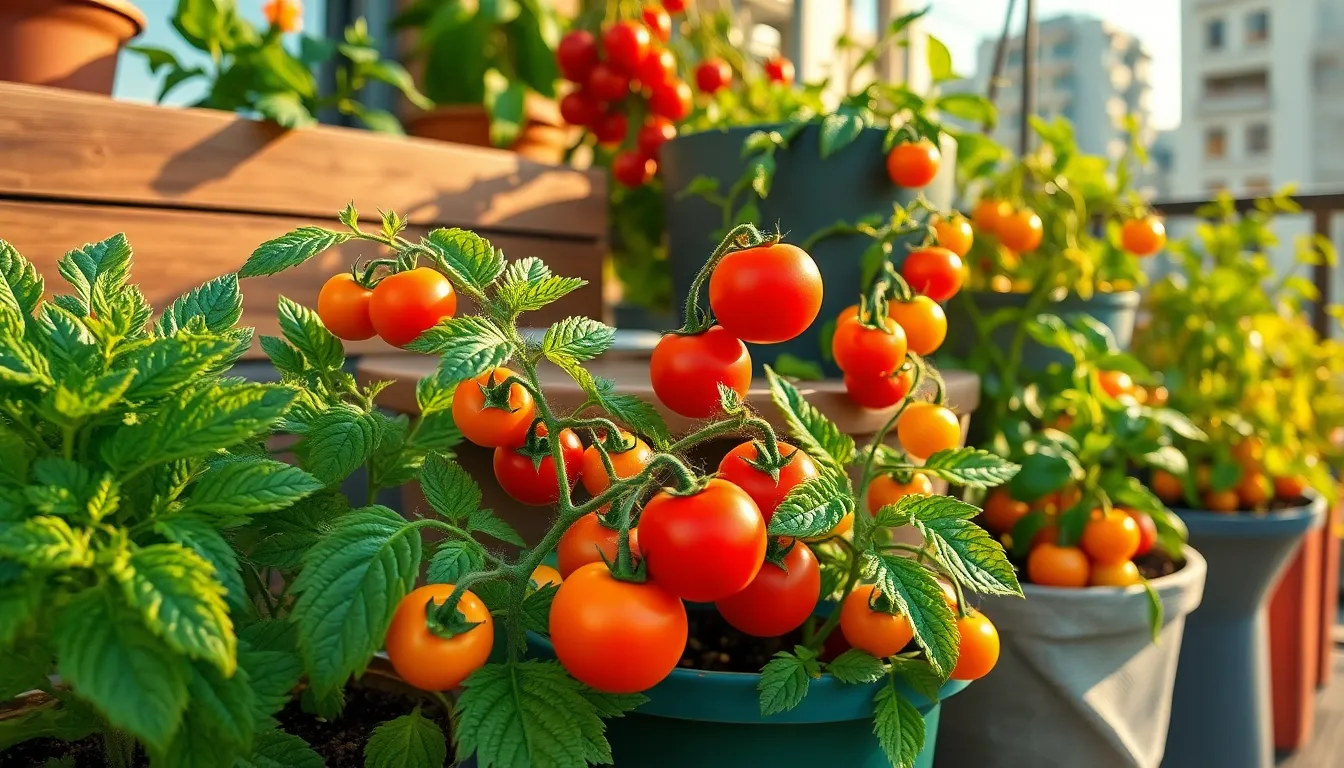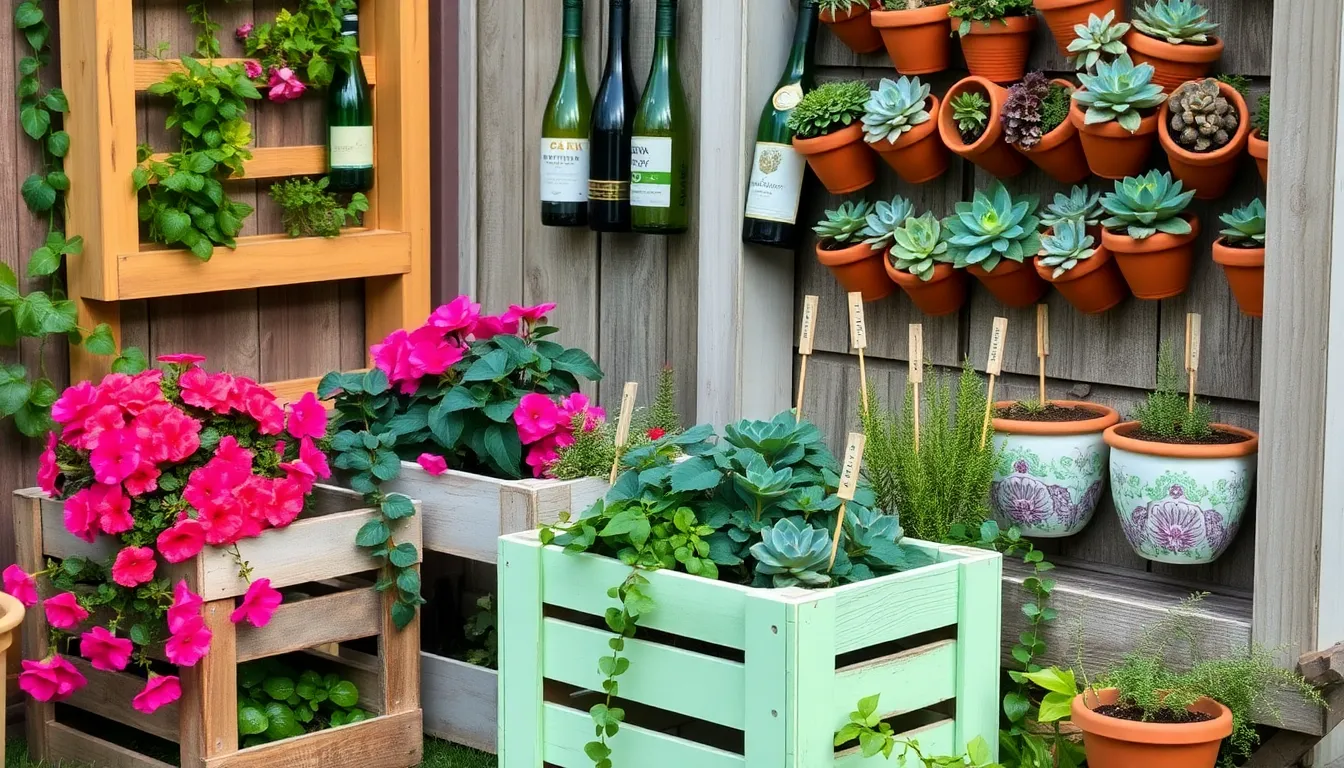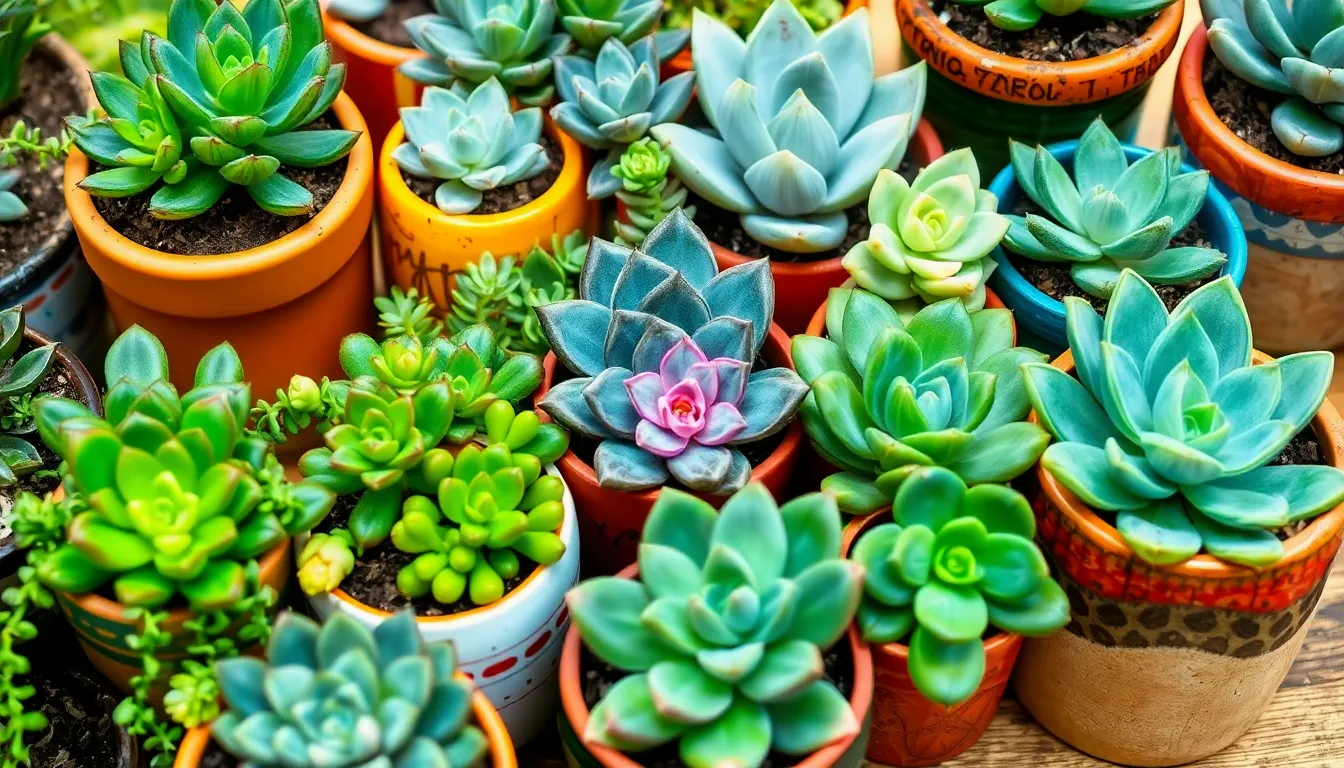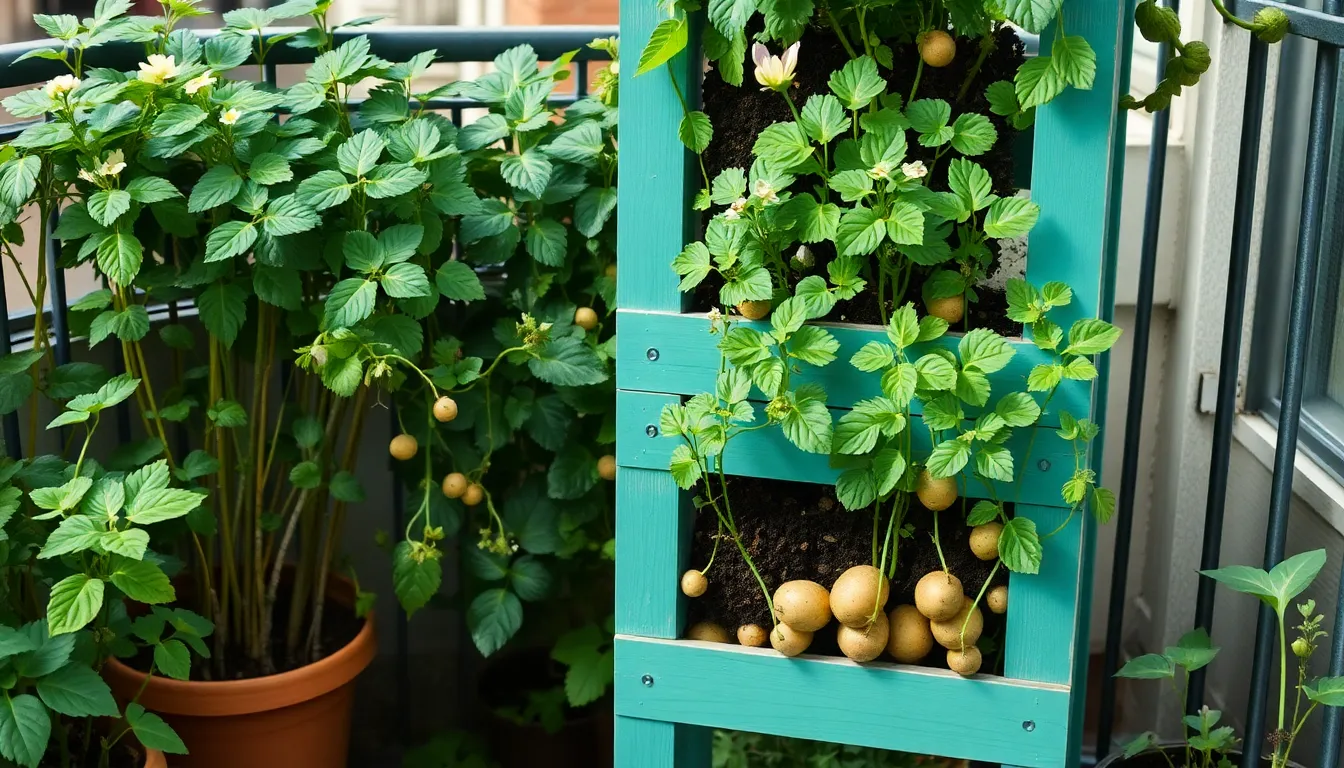Imagine the joy of plucking a sun-warmed tomato right from your own garden, even if that garden is a small balcony or a cozy corner of your patio. For both budding and seasoned gardeners, growing tomatoes in limited spaces might seem daunting, but with a touch of creativity and the right techniques, it’s not only possible—it’s incredibly rewarding. Tomatoes are not just a staple in kitchens worldwide; they are a testament to the versatility of gardening, proving that with the right approach, thriving plants can flourish even in the smallest of spaces.
In this article, you’ll discover how to transform compact areas into lush, productive spots overflowing with juicy tomatoes. We will explore strategic container choices, space-efficient plant varieties, and innovative vertical gardening tactics that maximize your growing area. Whether you’re a novice eager to try your hand at urban gardening or a seasoned horticulturist looking to optimize your space, these insights will equip you with the knowledge to cultivate your own tomato haven. So, let’s dig in and unlock the potential of your small-space garden, ensuring that your tomato-growing adventure is both fruitful and fun.
Select Compact Tomato Varieties
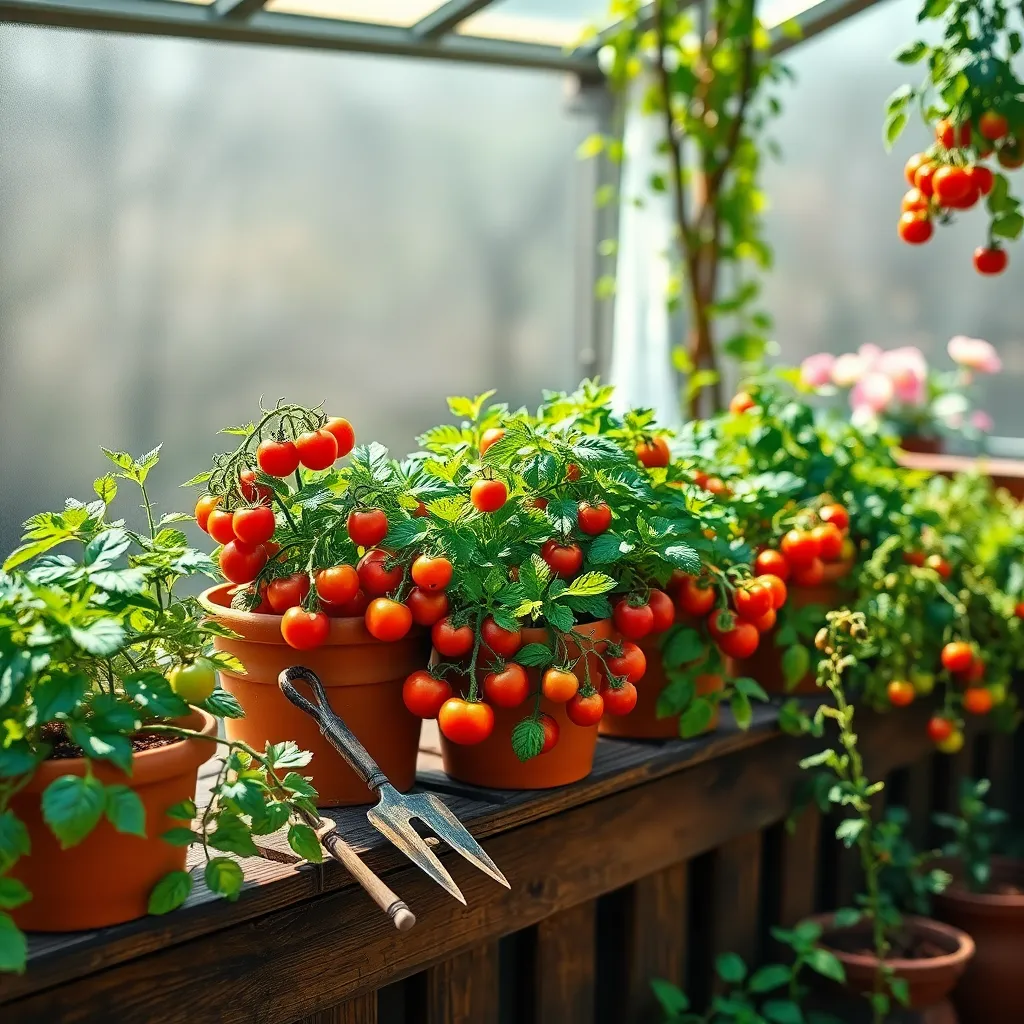
When planning to grow tomatoes in small spaces, selecting compact varieties is crucial for success. Determinate tomatoes, often referred to as “bush” tomatoes, are ideal for limited areas as they grow to a manageable height and set fruit over a concentrated period.
Popular compact varieties include ‘Patio Princess,’ ‘Tiny Tim,’ and ‘Balcony.’ These types thrive in containers and small garden beds, making them perfect for urban gardening.
Ensure your compact tomatoes receive at least six hours of sunlight daily for optimal growth. Place containers on a sunny balcony or window ledge, rotating them regularly to ensure even light exposure.
For container gardening, choose a pot that is at least 12 inches deep to accommodate the root system. Use a high-quality potting mix enriched with organic compost to provide necessary nutrients.
Regular watering is essential, especially during dry spells, to prevent blossom end rot. Aim to keep the soil consistently moist but not waterlogged, and consider using mulch to retain moisture.
Fertilize your compact tomatoes every two weeks with a balanced liquid fertilizer to support fruit production. For advanced gardeners, experimenting with organic options like fish emulsion can enhance growth while maintaining soil health.
Utilize Vertical Growing Techniques

Maximize your small space by utilizing vertical growing techniques, which allow you to grow more plants without taking up additional ground area. Start by installing sturdy trellises or cages that can support the weight of tomato plants as they grow taller.
For those new to vertical gardening, consider using a simple bamboo teepee or a prefabricated metal cage. These structures not only support the plant but also help improve air circulation, which is crucial for preventing diseases like blight.
Pruning is essential when growing tomatoes vertically, as it encourages healthier growth and more fruit production. Regularly remove the lower leaves and side shoots to focus the plant’s energy on producing tomatoes rather than excessive foliage.
Incorporate a consistent watering routine to ensure your vertically grown tomatoes thrive. Using a drip irrigation system can provide consistent moisture at the roots, which is especially beneficial in small spaces where the soil can dry out quickly.
Choose Suitable Containers
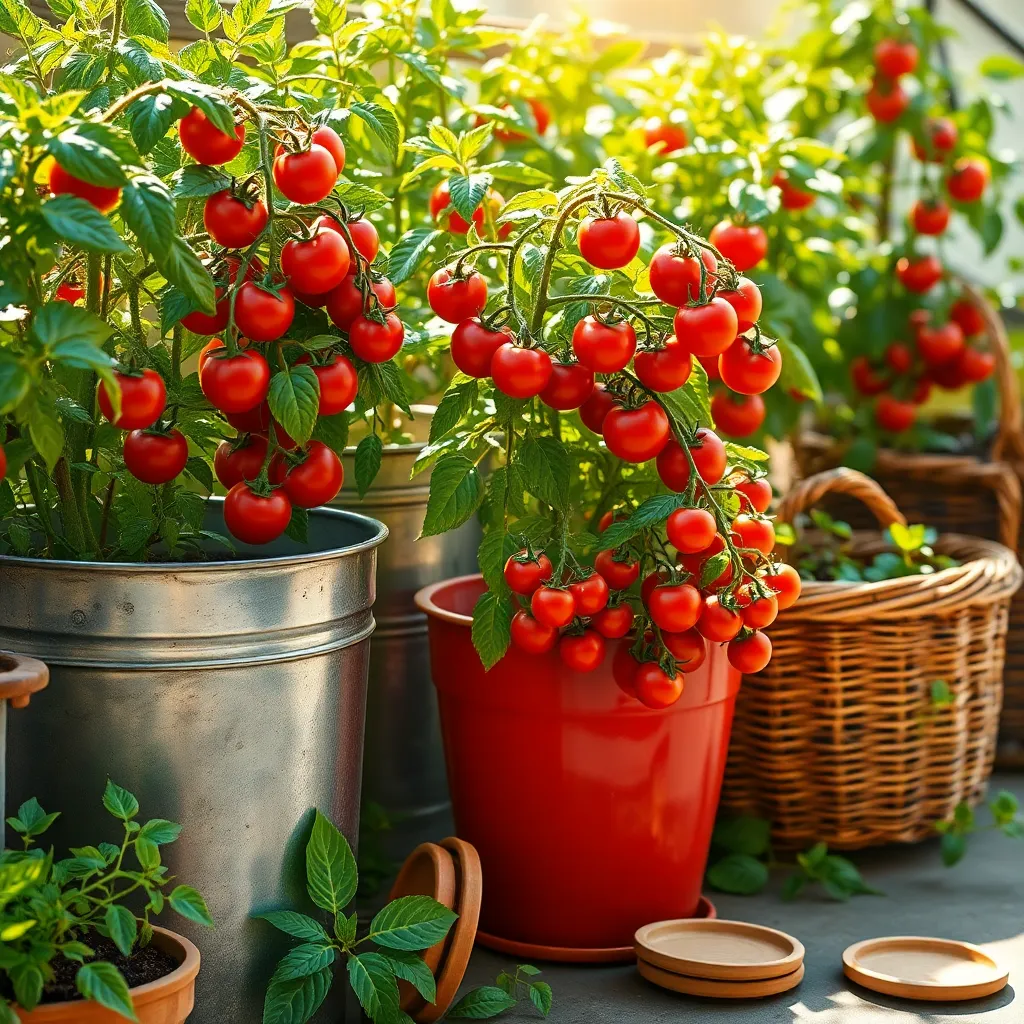
Choosing the right containers is crucial for successfully growing tomatoes in small spaces. Look for containers that are at least 18 inches in diameter and have adequate drainage holes to prevent waterlogging.
It’s important to select containers made of durable materials such as clay, ceramic, or high-quality plastic. These materials not only retain heat better but also provide stability to support the growing plant.
For those looking to maximize yield, consider opting for self-watering containers which help maintain consistent moisture levels. This consistency is vital for preventing blossom end rot, a common issue caused by irregular watering.
Even if you’re a beginner, using a quality potting mix specifically designed for container gardening can make a big difference. Choose a mix enriched with organic matter to provide the nutrients tomatoes need to thrive.
Experienced gardeners might experiment with adding slow-release fertilizers to the potting mix. This approach ensures a steady supply of nutrients, promoting healthy growth throughout the season.
Finally, remember to position your containers in a location that receives at least six to eight hours of sunlight daily. Tomatoes are sun-loving plants, and adequate light is essential for fruit production.
Optimize Sunlight Exposure
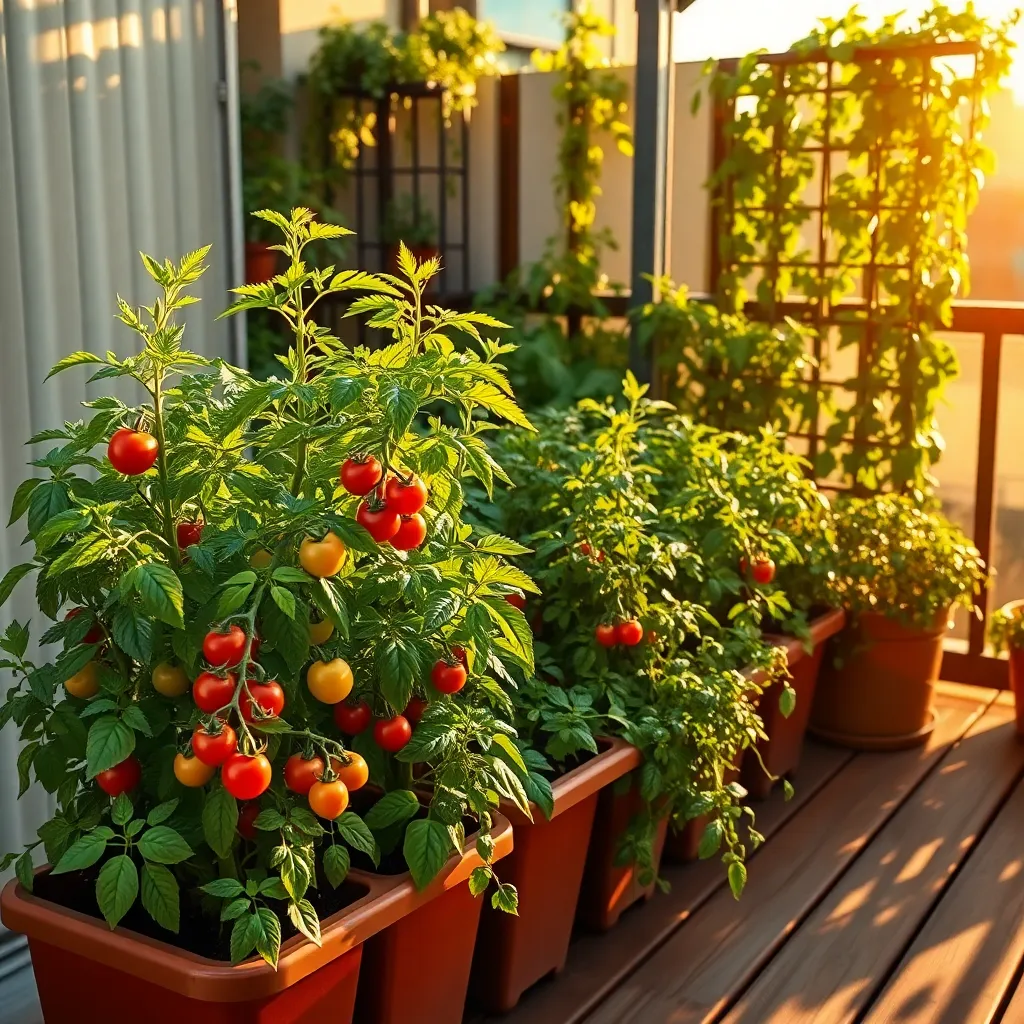
Optimizing sunlight exposure is crucial for growing healthy tomatoes, especially in small spaces. Most tomato varieties thrive in full sun, requiring at least six to eight hours of direct sunlight daily.
Consider the position of your containers to maximize sun exposure. South-facing balconies or patios are ideal, as they usually receive the most consistent sunlight throughout the day.
If direct sunlight is a challenge, you can use reflective surfaces to enhance the light reaching your plants. Positioning mirrors or light-colored surfaces behind containers can help bounce light back onto the foliage.
For those with limited sunlight access, choosing tomato varieties bred for lower light conditions can be beneficial. Compact or dwarf varieties often require less sunlight and can still produce a good yield in partial shade.
Implement Efficient Watering Methods

Watering is a critical component when growing tomatoes in small spaces, as containers tend to dry out more quickly than garden beds. To ensure your tomatoes thrive, water them deeply but infrequently, allowing the soil to dry out slightly between watering sessions.
Using self-watering containers can be a game-changer for maintaining consistent moisture levels. These containers feature a reservoir at the bottom that provides a steady water supply, reducing the risk of both overwatering and underwatering.
For those using traditional pots, consider adding a layer of mulch on top of the soil to help retain moisture. Organic mulches like straw or shredded leaves are excellent choices that not only conserve water but also improve soil health over time.
Beginners should start by watering tomato plants in the morning to reduce evaporation and prevent fungal diseases. More experienced gardeners might employ a drip irrigation system, which delivers water directly to the roots and can be set on a timer for maximum efficiency.
Conclusion: Growing Success with These Plants
In nurturing any relationship, much like growing tomatoes in small spaces, the key is to make the most of what you have. We explored the five essential concepts: understanding your partner’s needs, creating a supportive environment, practicing patience and consistency, embracing communication, and celebrating growth together. These principles, akin to tending a garden, can transform even the smallest of spaces into a thriving relationship.
As an actionable next step, take a moment today to identify one area where you can cultivate a deeper connection with your partner. This might mean setting aside time for a meaningful conversation or creating a shared goal.
Remember, relationships flourish when we tend to them with care and intention. Save or bookmark this article as your go-to guide for nurturing your relationship garden. It’s a resource you’ll want to revisit as you cultivate a richer, more fulfilling connection.
Looking ahead, know that the seeds you plant today can lead to a bountiful harvest of love and understanding. With dedication and heart, your relationship will not only survive but thrive in any space.

